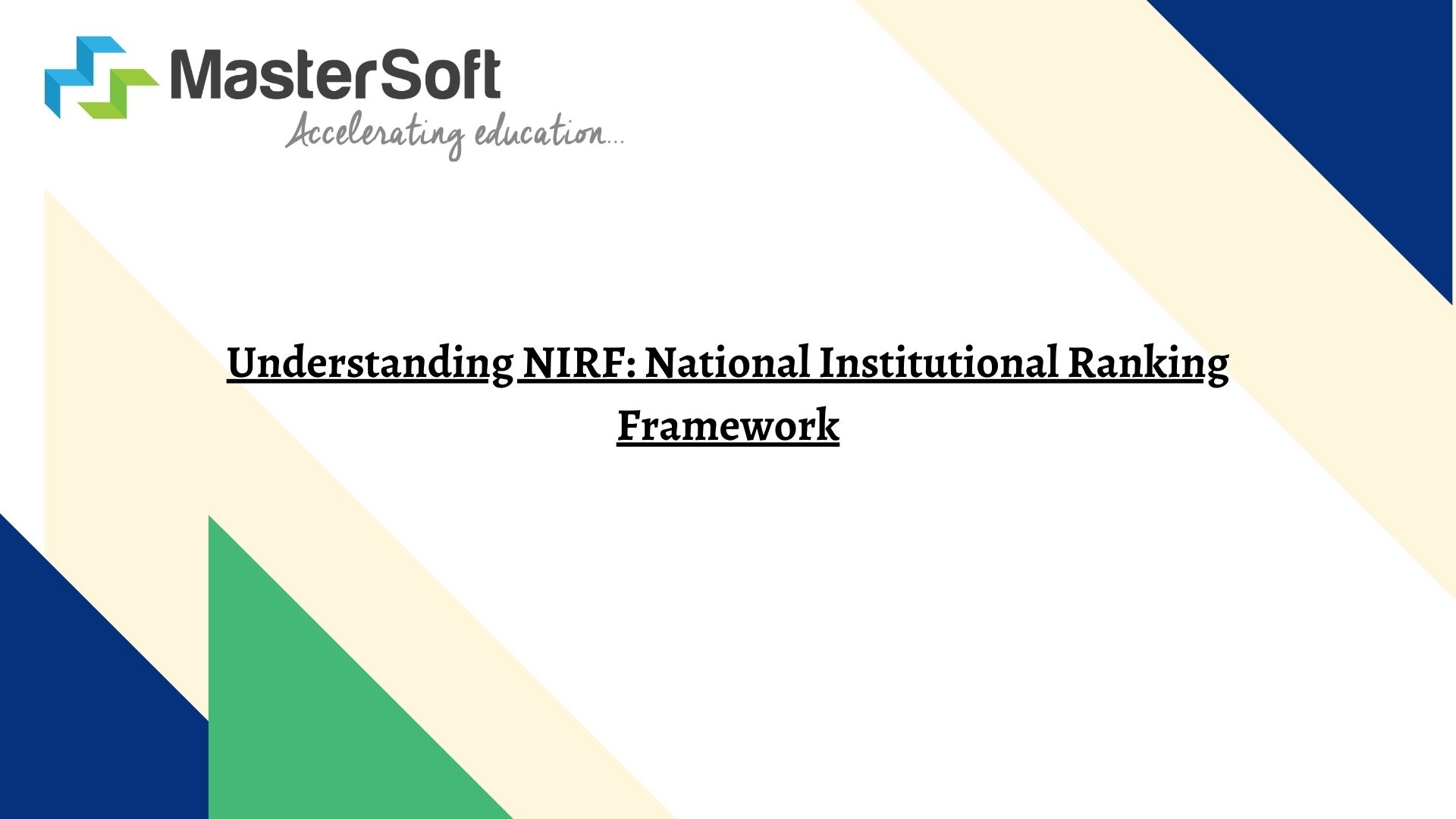In today’s fast-paced education landscape, rankings play a crucial role in helping students and institutions make informed decisions. The National Institutional Ranking Framework NIRF, launched by the Ministry of Education in India, provides a transparent and robust ranking mechanism for higher education institutions. Since its inception in 2015, NIRF has grown in importance and continues to serve as a reliable tool to assess institutions’ performance across various parameters.
What is NIRF?
NIRF is a framework adopted by the Government of India to rank higher education institutions based on specific metrics. It covers universities, engineering institutes, management schools, medical institutions, and other categories. Every year, participating institutions are ranked under NIRF based on their performance across five major parameters:
- Teaching, Learning & Resources (TLR)
- Research and Professional Practices (RP)
- Graduation Outcomes (GO)
- Outreach and Inclusivity (OI)
- Perception (PR)
These metrics help ensure an unbiased evaluation of institutes’ academic reputation, research output, and inclusivity.
Importance of NIRF Rankings
- Guidance for Students: NIRF rankings offer a comprehensive evaluation of institutions, providing students with a reliable resource to help them choose the right college based on their academic aspirations.
- Institutional Benchmarking: NIRF encourages higher education institutions to enhance their performance. By aiming for better ranks, colleges and universities are motivated to improve their infrastructure, teaching standards, and research capabilities.
- International Recognition: In the globalized world of education, NIRF rankings are considered valuable for institutions aiming to attract international students. A high rank can also enhance the global reputation of Indian universities.
- Government Policies: The ranking data aids policymakers in assessing the current state of higher education. This insight helps in formulating policies that promote growth in specific areas such as research and inclusivity.
Key Parameters in NIRF Ranking System
1. Teaching, Learning & Resources (TLR)
This parameter measures the teaching environment in an institution. It includes metrics such as faculty quality, student-teacher ratio, and infrastructure. The availability of resources like libraries, laboratories, and e-learning facilities are crucial for a high score in this category.
2. Research and Professional Practices (RP)
This parameter evaluates an institution’s research output, patents, publications, and its collaborations with industry. Institutions with strong research programs and contributions to the academic world tend to score high in this category.
3. Graduation Outcomes (GO)
The GO parameter assesses the success of students graduating from an institution. It includes metrics such as placement statistics, graduation rate, and higher studies. Institutions with a strong track record of placements and alumni success rank better in this category.
4. Outreach and Inclusivity (OI)
Inclusivity is essential for any higher education system. The OI parameter measures an institution’s efforts in providing education to all segments of society. Metrics such as the representation of women, socially and economically disadvantaged students, and outreach programs are considered.
5. Perception (PR)
This parameter assesses the reputation of an institution among its peers, employers, and the general public. Institutions that are well-regarded for their academic excellence, innovation, and leadership score higher in this category.
NIRF Ranking Categories
NIRF ranks institutions in different categories such as:
- Overall
- University
- Engineering
- Management
- Pharmacy
- Medical
- Law
- Architecture
- Dental
Each category has its specific set of parameters, ensuring a fair assessment across various disciplines.
The Process of Ranking in NIRF
- Data Submission: Participating institutions provide detailed data regarding their academic and non-academic aspects. This data is essential for the evaluation process.
- Data Validation: After submission, the data is thoroughly checked and validated by NIRF’s validation partners. This ensures authenticity and prevents any manipulation of data.
- Scoring and Ranking: Based on the five core parameters, institutions are scored, and rankings are released accordingly.
Recent Trends in NIRF Rankings
Each year, NIRF rankings highlight the progress of Indian institutions. Indian Institute of Technology (IIT) Madras has consistently held the top spot in the engineering category for the past few years. Similarly, universities like Indian Institute of Science (IISc), Bangalore and Jawaharlal Nehru University (JNU) have also maintained high ranks in the overall and university categories.
Moreover, the rankings show the rising prominence of private institutions in fields like management and medicine. Institutions such as Amrita Vishwa Vidyapeetham and Manipal Academy of Higher Education have gained recognition in the NIRF rankings.
Challenges and Criticisms
While NIRF is widely recognized, it is not without its criticisms. Some of the common concerns include:
- Overemphasis on Research: Critics argue that NIRF places too much emphasis on research output, which can disadvantage newer or smaller institutions that are focused more on teaching.
- Subjectivity in Perception: The perception parameter can be influenced by external factors, which may not always reflect an institution’s actual academic quality.
- Non-participation of Institutes: Some prestigious institutions, such as certain autonomous universities and research institutes, choose not to participate in the ranking process, which may skew the results.
How Institutions Can Improve Their NIRF Ranking
To improve their ranking, institutions need to focus on a few key areas:
- Investing in Faculty: Attracting and retaining quality faculty members is essential. Institutions should aim to improve the student-teacher ratio and provide ample opportunities for faculty development.
- Strengthening Research Output: Institutions need to promote a research-driven environment by providing resources, funding, and collaboration opportunities with industries.
- Enhancing Inclusivity: Promoting diversity in the student body, offering scholarships, and creating a conducive learning environment for underrepresented groups can boost rankings in the OI category.
- Building Infrastructure: A focus on modern infrastructure and better learning facilities is crucial for improving TLR scores.
Conclusion
The National Institutional Ranking Framework (NIRF) is more than just a ranking system—it is a reflection of the quality of higher education in India. For institutions, it provides a blueprint for continuous improvement. For students, it acts as a reliable guide in choosing the right institution. As the landscape of education evolves, NIRF will continue to be a significant tool in shaping the future of higher education in India.







